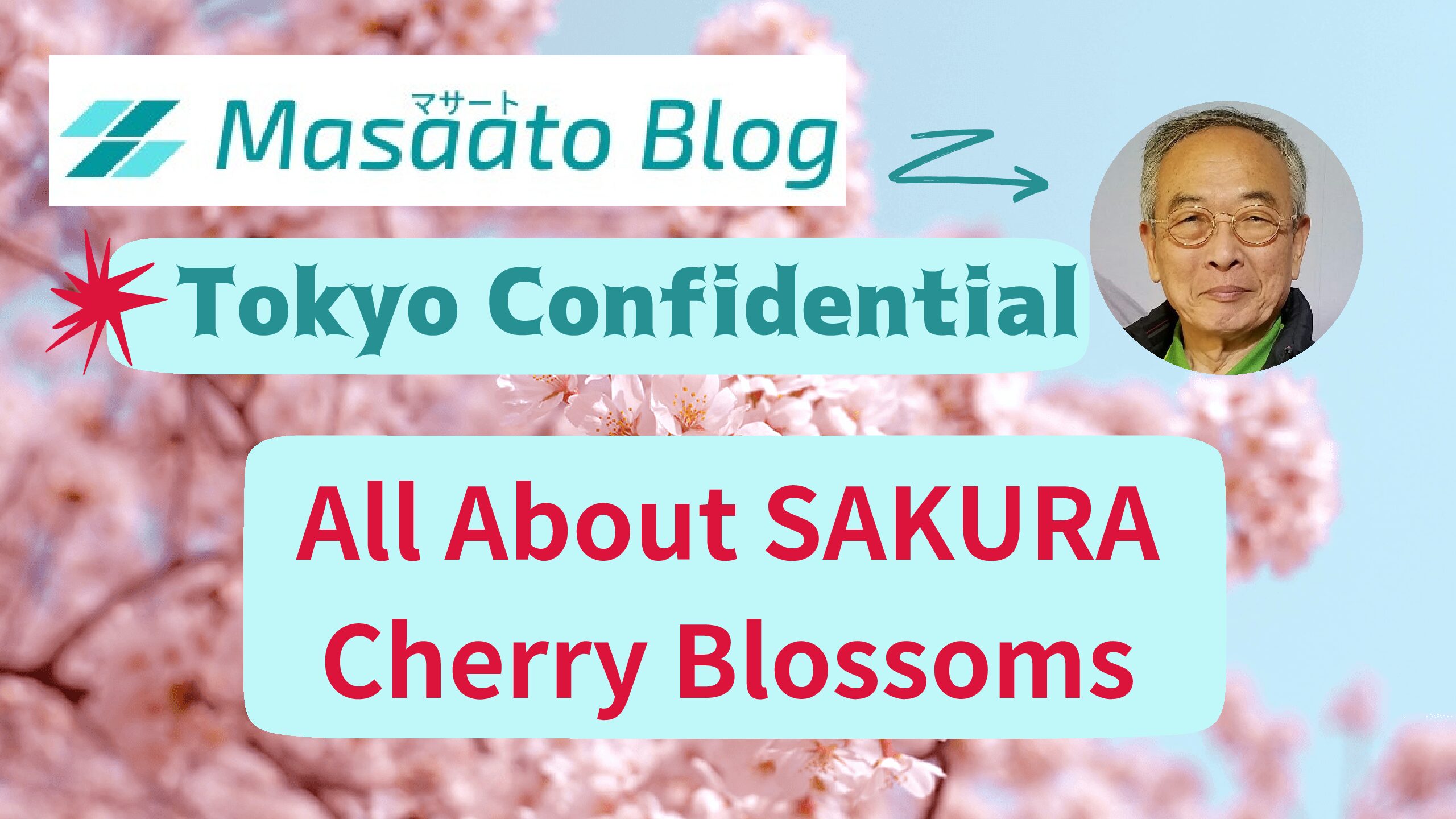If you have the opportunity to visit Japan, do not miss the cherry blossom period. Not only are cherry blossoms beautiful, but they are essential to understanding Japanese culture.
【contents】
- Japanese people love SAKURA(cherry blossoms)
- Cherry blossom viewing(Hanami in Japanese)
- Why are Japanese people so fascinated with cherry blossoms?
- Ways for Predicting Cherry Blossom Blooming
- Kinds of cherry blossoms, the national flower?
- National Flower of Japan?
- Agricultural Guideline
- Cherry Blossom Front
- SAKURA Meat
- Cooking with Cherry Blossoms
- Girl’s name Sakura
Japanese people love SAKURA(cherry blossoms)
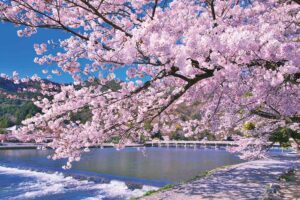 Japanese people love SAKURA( cherry blossoms). Since ancient times, Japanese people have been attracted by the beauty and loveliness of cherry blossoms. Cherry trees have been thought to be the dwelling place of gods and spirits that herald the coming of spring, and their short, fleeting lives have been the subject of thoughts on life and death.
Japanese people love SAKURA( cherry blossoms). Since ancient times, Japanese people have been attracted by the beauty and loveliness of cherry blossoms. Cherry trees have been thought to be the dwelling place of gods and spirits that herald the coming of spring, and their short, fleeting lives have been the subject of thoughts on life and death.
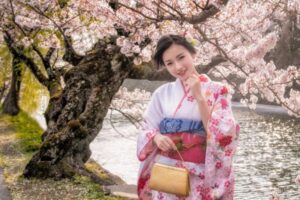 Among cherry trees, those that have been around for a long time and those with magnificent branches are especially cherished and are protected by the national government as natural monuments or historic sites of scenic beauty.
Among cherry trees, those that have been around for a long time and those with magnificent branches are especially cherished and are protected by the national government as natural monuments or historic sites of scenic beauty.
Every year in late March or early April, the Japan Meteorological Agency announces the cherry blossoms to 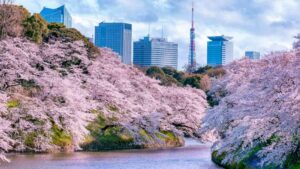 be in bloom, which is reported on TV and in newspapers. The Japanese people eagerly await the announcement. It is called “Kaika Sengen” in Japanese. The cherry blossoms will be in full bloom about one week after the blooming.
be in bloom, which is reported on TV and in newspapers. The Japanese people eagerly await the announcement. It is called “Kaika Sengen” in Japanese. The cherry blossoms will be in full bloom about one week after the blooming.
Blooming(Kaika in Japanese) is defined as five or six blossoms on a specimen tree. Full bloom is when 80% of all the blossoms are in full bloom. Sample trees to check for blooming are located throughout Japan. In Tokyo, it is located at Yasukuni Jinja Shrine.
Cherry blossom viewing(Hanami in Japanese)
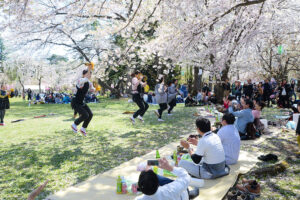 Japanese people have a custom of spreading out a sheet on the ground and eating and drinking under the cherry blossoms. This is one of the traditional springtime events in Japan. Many people throughout Japan gather with family and friends in parks, shrines, temples, and other places to enjoy eating, drinking, chatting, and sometimes karaoke while admiring the cherry blossoms. Sometimes the cherry blossoms are illuminated at night.
Japanese people have a custom of spreading out a sheet on the ground and eating and drinking under the cherry blossoms. This is one of the traditional springtime events in Japan. Many people throughout Japan gather with family and friends in parks, shrines, temples, and other places to enjoy eating, drinking, chatting, and sometimes karaoke while admiring the cherry blossoms. Sometimes the cherry blossoms are illuminated at night.
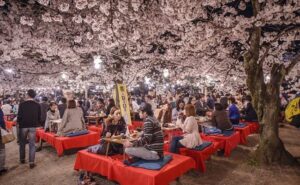 Such cherry blossom viewing spots are everywhere. Young employees of companies, under the asking of their boss, go out to secure a place for cherry blossom viewing with their colleagues after working hours. What could be a lot better, however, is that the cherry blossom period is relatively short, lasting only 7 to 10 days.
Such cherry blossom viewing spots are everywhere. Young employees of companies, under the asking of their boss, go out to secure a place for cherry blossom viewing with their colleagues after working hours. What could be a lot better, however, is that the cherry blossom period is relatively short, lasting only 7 to 10 days.
Why are Japanese people so fascinated with cherry blossoms?
Why have cherry blossoms been an object of reverence and enrichment for the Japanese people since ancient times?
Two reasons
The first is the longing for spring. Japan has four distinct seasons. After a long, cold winter, the long-awaited spring arrives. Flora and fauna come back to life, and people’s hearts become brighter. Cherry blossoms bloom with warmth and beauty as if expressing the spirit of the people. People will feel the arrival of spring even more when they see the cherry blossoms.
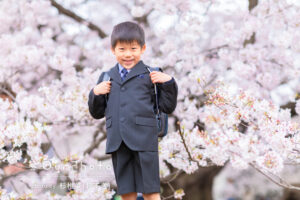 The second is the transience of life. Even before the cherry blossoms bloom, we Japanese eagerly wait for them to come into bloom. Then, when the Japanese think they are finally in full bloom, if there is a strong wind and rain at night, they will be completely out of sight by the next day.
The second is the transience of life. Even before the cherry blossoms bloom, we Japanese eagerly wait for them to come into bloom. Then, when the Japanese think they are finally in full bloom, if there is a strong wind and rain at night, they will be completely out of sight by the next day.
This can be called the Buddhist view of the impermanence of all things. This is the idea that everything in the world is constantly changing, and nothing stays the same forever.
In April, when the cherry blossoms bloom, a new school year begins in Japan, and a new accounting year starts in companies. In the West, many social systems begin in January and end in December, but in Japan, most systems begin in April and end in March of the following year.
Ways for Predicting Cherry Blossom Blooming
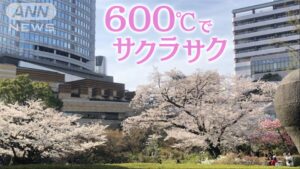 There are several ways for predicting the blooming of cherry blossoms. The most famous is probably “Way of 600 Degrees” of Cherry Blossom blooming.
There are several ways for predicting the blooming of cherry blossoms. The most famous is probably “Way of 600 Degrees” of Cherry Blossom blooming.
This states that the maximum daily temperatures are added up from February 1, and when the cumulative total reaches 600 degrees, the cherry blossoms will bloom.
In 1993, 1997, 2003, and 2014, the actual bloom date coincided with the date when the temperature reached 600 degrees. In other years, there was a gap of several days.
Foreign tourists wishing to visit Japan are aware of this Japanese custom through the Internet and other sources. They have been applying to me since the fall of the previous year for a sightseeing guide to coincide with this time of year. For the past three years, tourist guides were closed due to the COVID‑19 disaster, but from this year, 2023, the COVID‑19 disaster has subsided and the number of foreign tourists is gradually increasing.
Kinds of cherry blossoms, the national flower?
There are about 10 species of cherry trees in Japan that have grown naturally. There are more than 100 varieties of cherry trees that were created by natural crossbreeding. There are also many improved varieties created by crossbreeding the original species, and it is said that there are more than 600 varieties.
The most representative of these is the Someiyoshino cherry tree. The Japan Meteorological Agency uses Someiyoshino as the standard tree for blooming. The Someiyoshino is also the most popular cherry tree for cherry blossom viewing. The color of the flowers is pale pink and pretty. The height of the tree is about 7 to 8 meters, and during the blooming, there are no leaves, only pale pink flowers.
Among the many types of cherry trees, there are about 10 types of early-blooming cherry trees that bloom and fall about a month before Someiyoshino’s bloom. The blooming period is also relatively short, from 7 to 10 days.
National Flower of Japan?
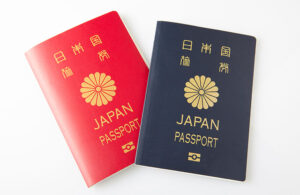 Japan does not have a legally designated national flower. The chrysanthemum, which is the motif of the imperial family crest, and the cherry blossom, which is widely popular among the Japanese people, are considered the de facto national flowers. It is international practice to have the country’s coat of arms on the cover of the passport, but since Japan has no national coat of arms, the chrysanthemum is printed on the passport.
Japan does not have a legally designated national flower. The chrysanthemum, which is the motif of the imperial family crest, and the cherry blossom, which is widely popular among the Japanese people, are considered the de facto national flowers. It is international practice to have the country’s coat of arms on the cover of the passport, but since Japan has no national coat of arms, the chrysanthemum is printed on the passport.
Agricultural Guideline
Japanese farmers have long used various plants as a guide for agriculture. Cherry blossoms are one such example. When the buds are about 70% full, rice husks are sown. When the flowers were in full bloom, they prayed for a good harvest under the cherry blossoms. In summer, when the cherry blossoms turned lush and green, we began preparing for the field crop.
Even in the ritual of praying for a bountiful harvest, the way the flowers bloomed was sometimes used to predict the year’s harvest.
In this way, cherry blossoms have been valued as a substitute for a calendar to help farmers understand the subtle changes in the seasons each year.
Cherry Blossom Front
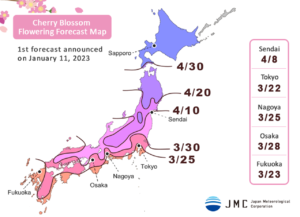 The cherry blossom front is a meteorological line that indicates the progress of cherry blossoms in spring in Japan and when they will bloom in each area. It is announced by the Japan Meteorological Agency and private weather companies and reported on TV and in newspapers.
The cherry blossom front is a meteorological line that indicates the progress of cherry blossoms in spring in Japan and when they will bloom in each area. It is announced by the Japan Meteorological Agency and private weather companies and reported on TV and in newspapers.
Usually, the cherry blossoms begin to bloom from Kyushu island in the southwest to Hokkaido island in the northeast. As the cherry blossom front moves northward, the cherry blossom season arrives in various parts of Japan, and cherry blossom viewing(Hanami in Japanese) and other festivities become a tradition.
On Kyushu island, where the cherry blossoms bloom first, and on Hokkaido island, where they bloom last, there is a gap of more than one month between the blooming seasons.
SAKURA Meat
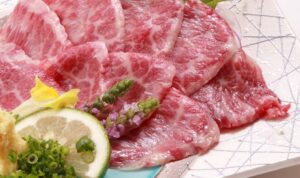 In Japan, horse meat is called “sakura” meat. There are several reasons.
In Japan, horse meat is called “sakura” meat. There are several reasons.
(1) Name “sakura” came from the fact that when horse meat is cut, the meat looks like cherry blossoms color.
(2)There was a ranch of the Edo shogunate in the “sakura” area in Chiba prefecture and there were many horses there.
(3) Horses eat a lot of food during the winter and become fatty and delicious in the spring when the cherry blossoms are in full bloom.
Cooking with Cherry Blossoms
The following dishes are made with cherry petals and enjoy the flavor of cherry blossoms.
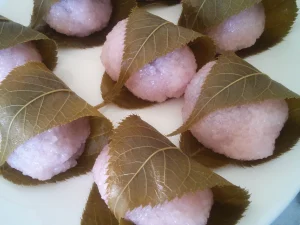 Sakura-mochi: Japanese confectionery made of thinly spread glutinous rice dough, filled with red bean paste, and topped with cherry petals.
Sakura-mochi: Japanese confectionery made of thinly spread glutinous rice dough, filled with red bean paste, and topped with cherry petals.
Salted cherry blossoms: Cherry blossoms are preserved in salt and used in cooking. For example, it can be mixed with white rice to enjoy the aroma of cherry blossoms or added to salads.
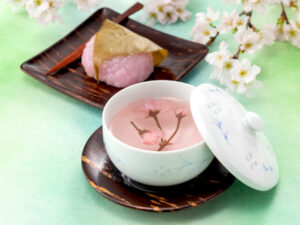 Cherry blossom tea: Dried cherry blossoms are added to hot water and drunk.
Cherry blossom tea: Dried cherry blossoms are added to hot water and drunk.
Cherry blossom sake: Sake made from pickled cherry blossoms, with the aroma of cherry blossoms.
Cherry blossom tempura: A dish in which cherry blossoms are battered and deep fried, providing the aroma and crispy texture of cherry blossoms.
Girl’s name Sakura
In Japan, women are often given the name Sakura as their first name, in honor of the beautiful and pretty Sakura flower.
The name Sakura is sometimes written in kanji (Chinese characters) and sometimes in hiragana.
*************************************************************************
As described above, cherry blossoms have been deeply involved in the lives, customs, and spirituality of the Japanese people since ancient times.
****************************************************************************
Reporter’s profile
Reporter Masato Niitsu is an official tourist guide of the Japanese government.
I guide foreign visitors to Japan through Japanese culture, scenic spots, historical buildings, etc. in English. When the guide finishes his/her work, the tourists rate the guide’s work on a 5-point scale.
I am working on a website to match my guides with international tourists who wish to visit Japan.
In 2018, I became the number one most popular guide on the website.

